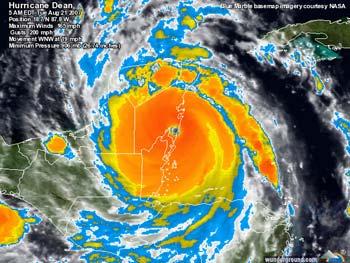Source: Xinhua
04-21-2009 14:04
Special Report: Tech MaxWASHINGTON, April 20 (Xinhua) -- Scientists at Harvard University have found that tropical cyclones readily inject ice far into the stratosphere, possibly feeding global warming.
 |
| The globe's strongest tropical cyclone was an Atlantic storm (File photo) |
The finding, published Monday in Geophysical Research Letters, provides more evidence of the intertwining of severe weather and global warming by demonstrating a mechanism by which storms could drive climate change. Many scientists now believe that global warming, in turn, is likely to increase the severity of tropical cyclones.
"Since water vapor is an important greenhouse gas, an increase of water vapor in the stratosphere would warm the Earth's surface," says David M. Romps, a research associate in Harvard's Department of Earth and Planetary Science.
"Our finding that tropical cyclones are responsible for many of the clouds in the stratosphere opens up the possibility that these storms could affect global climate, in addition to the oft-mentioned possibility of climate change affecting the frequency and intensity of tropical cyclones."
Romps and co-author Zhiming Kuang, assistant professor of climate science in Harvard's Faculty of Arts and Sciences, were intrigued by earlier data suggesting that the amount of water vapor in the stratosphere has grown by roughly 50 percent over thepast 50 years.
Scientists are currently unsure why this increase has occurred. The Harvard researchers sought to examine the possibility that tropical cyclones might have contributed by sending a large fraction of their clouds into the stratosphere.
Using infrared satellite data gathered from 1983 to 2006, Rompsand Kuang analyzed towering cloud tops associated with thousands of tropical cyclones, many of them near the Philippines, Mexico, and Central America.
